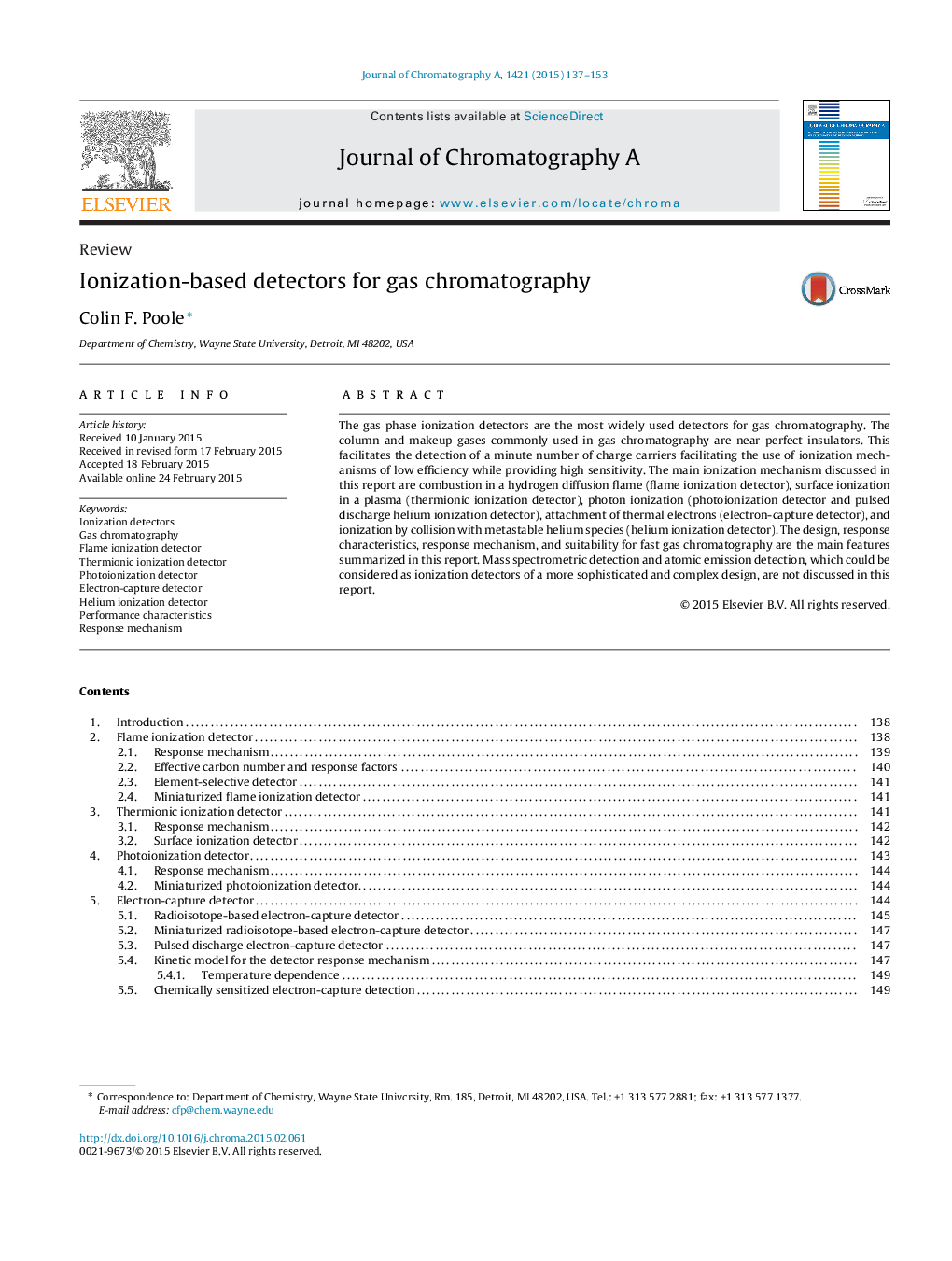| Article ID | Journal | Published Year | Pages | File Type |
|---|---|---|---|---|
| 1198686 | Journal of Chromatography A | 2015 | 17 Pages |
•General review of the operating principles of the common ionization detectors.•Summary of performance characteristics.•Outline of detector response mechanisms.•Miniaturized detectors for microscale applications.
The gas phase ionization detectors are the most widely used detectors for gas chromatography. The column and makeup gases commonly used in gas chromatography are near perfect insulators. This facilitates the detection of a minute number of charge carriers facilitating the use of ionization mechanisms of low efficiency while providing high sensitivity. The main ionization mechanism discussed in this report are combustion in a hydrogen diffusion flame (flame ionization detector), surface ionization in a plasma (thermionic ionization detector), photon ionization (photoionization detector and pulsed discharge helium ionization detector), attachment of thermal electrons (electron-capture detector), and ionization by collision with metastable helium species (helium ionization detector). The design, response characteristics, response mechanism, and suitability for fast gas chromatography are the main features summarized in this report. Mass spectrometric detection and atomic emission detection, which could be considered as ionization detectors of a more sophisticated and complex design, are not discussed in this report.
